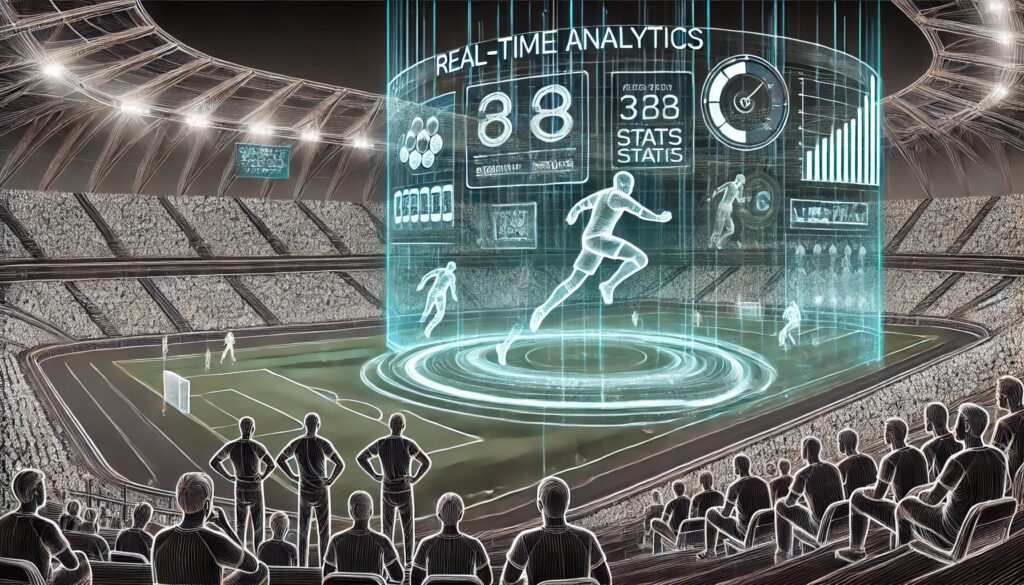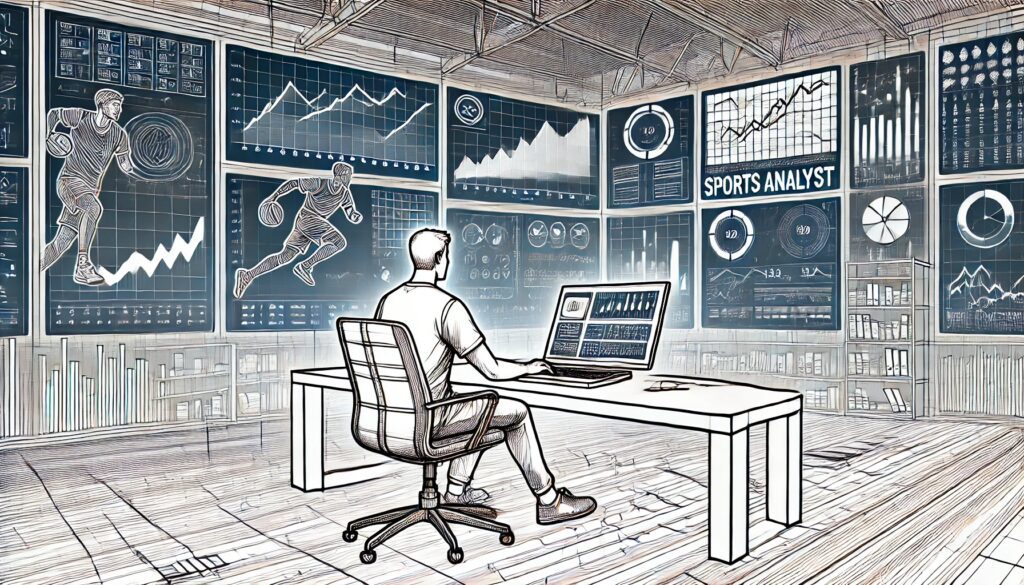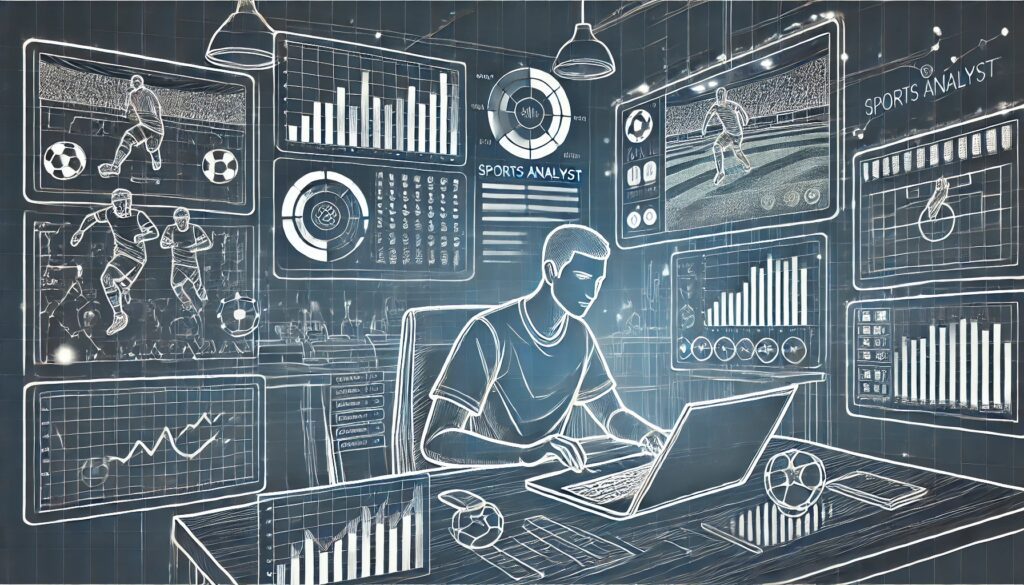
In the dynamic world of sports, data analytics has always played a crucial role. It shapes strategies and enhances performance. Today, the advent of Artificial Intelligence (AI) is revolutionizing this space. AI offers profound insights that are transforming how games are played and experienced. AI’s multifaceted impact is redefining player performance analysis, optimizing team strategies, and predicting injuries. This elevates both team management and the fan experience.
AI in Player Performance Analysis
Techniques Used
AI employs a variety of advanced techniques to analyze player performance. Machine learning models process vast amounts of data to identify patterns and trends. Computer vision systems analyze video footage to monitor player movements. Biomechanical analysis helps in understanding the physical aspects of player performance. These technologies collectively provide a comprehensive view of an athlete’s capabilities and areas for improvement.
Data Collection
Data collection in sports has become increasingly sophisticated with the use of wearables, video analysis, and IoT devices. Wearables like smartwatches and fitness bands monitor heart rates, movement, and exertion levels. Video analysis captures every move during training and matches. Smart balls and GPS trackers offer precise data on speed, distance, and positioning. This real-time data is crucial for creating detailed performance profiles.
Outcome and Benefits
The primary benefit of AI in sports analytics is the ability to provide actionable insights into player strengths and weaknesses. Coaches can use these insights to tailor training programs, make informed decisions about player selection, and optimize game strategies. For example, AI can highlight a player’s peak performance times, fatigue levels, and potential injury risks. This enables proactive measures to enhance player fitness and overall team performance.
By leveraging these advanced AI techniques, sports teams gain a significant competitive edge. AI ensures players are always at their best and reduces the likelihood of injuries. The integration of AI in sports is not just about performance enhancement; it’s about transforming the very fabric of how sports are played and experienced. This makes the entire process smarter and more efficient.
AI in Player Performance Analysis
Techniques Used
AI employs a variety of advanced techniques to analyze player performance. Machine learning models process vast amounts of data to identify patterns and trends. These models can predict outcomes based on historical data. Computer vision systems analyze video footage to monitor player movements, track ball trajectories, and assess tactical formations. This visual data provides precise measurements of player actions and interactions. Biomechanics analysis uses data from sensors to understand the physical aspects of player movements. It evaluates muscle use, joint angles, and force application, helping to optimize training regimens.
Data Collection
Data collection in sports is increasingly sophisticated, integrating multiple technologies. Wearables like smartwatches and fitness bands track heart rates, movement, and exertion levels. These devices provide continuous, real-time data during training and matches. Video analysis captures every move, allowing for detailed post-game reviews and strategy adjustments. IoT devices such as smart balls and GPS trackers offer precise data on speed, distance, and positioning. These tools gather a comprehensive set of metrics that are critical for performance analysis. This real-time data forms the foundation for creating detailed performance profiles.
Outcome and Benefits
The primary benefit of AI in sports analytics is its ability to provide actionable insights into player strengths and weaknesses. AI systems process and analyze the collected data to deliver valuable insights. Coaches can use these insights to tailor training programs, focusing on areas that need improvement. For instance, AI can highlight a player’s peak performance times and fatigue levels. This information helps in making informed decisions about player selection and game strategy. Additionally, AI can predict potential injury risks, allowing for preventive measures to be taken. This proactive approach enhances player fitness and overall team performance, giving teams a significant competitive edge.

AI in Game Strategy Optimization
Pre-game Analysis
AI models play a crucial role in pre-game analysis by simulating different game strategies to predict possible outcomes. These simulations use vast datasets from previous matches, player statistics, and other relevant metrics. Machine learning algorithms analyze these datasets to identify patterns and trends, allowing coaches to develop effective game plans. For instance, by simulating various offensive and defensive strategies, AI can forecast the likely success rates of different plays. This predictive capability helps coaches devise strategies that exploit the opponent’s weaknesses and bolster their team’s strengths.
Real-time Decisions
During games, AI assists in making real-time decisions, adjusting tactics based on the current state of play and opponent behavior. Real-time data collection through sensors and video feeds provides continuous updates on player positions, ball movements, and game dynamics. AI systems analyze this data instantaneously, offering insights into optimal tactical adjustments. For example, if the opposing team shifts to a more aggressive formation, AI can suggest counter-strategies to maintain defensive stability. This real-time analysis enables coaches to react swiftly and effectively, enhancing their team’s performance throughout the match.
Historical Data Usage
AI leverages historical data of teams and players to prepare for matches by identifying patterns in opponents’ strategies. By analyzing past performances, AI systems can uncover tendencies and habitual plays of the opposing team. For example, if a team consistently favors certain offensive moves in specific game situations, AI can predict these actions and prepare countermeasures. This use of historical data not only helps in formulating game plans but also in training players to anticipate and respond to the opponent’s tactics. Consequently, teams are better equipped and more strategically prepared for their matches.


AI in Injury Prediction and Prevention
Predictive Models
AI leverages advanced predictive models to assess the risk of injury for athletes. These models analyze players’ historical health data, including previous injuries, medical records, and genetic predispositions. Additionally, game intensity data—such as the physical demands of specific matches and training loads—is integrated to provide a comprehensive risk assessment. Machine learning algorithms identify patterns that correlate with injury risks, offering a proactive approach to player health management. For example, if an athlete shows signs of excessive fatigue or overuse, AI can flag these indicators as potential precursors to injury.
Preventive Measures
The predictive insights from AI models are invaluable for customizing training regimens to minimize injury risks. Coaches and medical staff can use these insights to tailor training programs that balance workload and recovery periods. AI helps in managing player workload effectively by suggesting adjustments in training intensity and duration. For instance, if AI detects that a player is at higher risk due to increased training load, it can recommend rest periods or lighter training sessions. This proactive management helps in maintaining player health and preventing injuries, ensuring that athletes remain in peak condition throughout the season.
Rehabilitation
AI also plays a pivotal role in the rehabilitation process by providing personalized recovery plans. AI-driven apps and devices monitor an athlete’s progress during rehabilitation, offering real-time feedback and adjustments to recovery protocols. These tools can track vital signs, movement patterns, and adherence to prescribed exercises. By continuously analyzing this data, AI can adapt recovery plans to ensure optimal outcomes. For example, if a player recovering from a knee injury shows slower progress in regaining strength, AI can modify the rehabilitation exercises to target specific muscle groups more effectively. This personalized approach accelerates recovery and reduces the likelihood of re-injury, facilitating a smoother and more efficient return to peak performance.

Enhancing Fan Experience
Game Analytics for Fans
AI-powered tools revolutionize how fans experience games by providing deeper insights into game dynamics and player performances. These tools analyze real-time data from matches, breaking down complex plays into understandable metrics. Fans can access detailed statistics on player movements, ball trajectories, and strategic formations. For instance, computer vision technology can track every player’s position on the field, offering fans a comprehensive view of tactical setups. This enriched data helps fans understand the nuances of the game, making the viewing experience more engaging and informative.
Personalized Content
Media companies use AI to offer personalized content tailored to individual fan preferences. AI algorithms analyze viewing habits and interactions to curate customized match highlights, player statistics, and predictive analyses of upcoming games. For example, AI can identify a fan’s favorite player and provide updates and highlights focused on that player. This personalization extends to in-app notifications and content recommendations, ensuring that fans receive the most relevant and exciting updates. The result is a more immersive and enjoyable viewing experience that keeps fans engaged and coming back for more.
Engagement Platforms
AI-driven platforms are enhancing fan interaction and loyalty through various interactive features. Fans can predict game outcomes, participate in virtual coaching sessions, and engage in interactive games. These platforms often include AI chatbots that facilitate real-time conversations with fans, providing instant updates and engaging trivia. Additionally, virtual reality (VR) and augmented reality (AR) technologies offer immersive experiences, allowing fans to feel as though they are part of the game. By creating opportunities for active participation, these platforms build stronger connections between fans and their favorite teams.
Challenges and Ethical Considerations
Accuracy and Reliability
One significant challenge is ensuring the accuracy of AI predictions and the reliability of data. AI systems depend on high-quality, comprehensive datasets to make accurate predictions. Incomplete or biased data can lead to incorrect insights, affecting game strategies and fan experience. It is crucial to continuously validate and refine these systems to maintain their reliability.
Privacy Concerns
The use of personal data in AI analytics raises ethical considerations around privacy. Collecting and analyzing detailed personal data from athletes, such as health metrics and performance stats, must be done responsibly. There must be clear guidelines and consent processes to protect athletes’ privacy and ensure that data is used ethically.
Dependence on Technology
An over-reliance on AI in sports could potentially overshadow human judgment and traditional coaching methods. While AI provides valuable insights, it is essential to balance these with the expertise and intuition of coaches. The human element in sports decision-making is irreplaceable, and technology should be viewed as a complementary tool rather than a replacement.
Future of AI in Sports
Advancements in Technology
The future of AI in sports holds exciting possibilities. One anticipated development is the emergence of enhanced AI coaches. These AI systems will offer real-time strategic advice, analyze game footage, and even simulate potential plays based on opponent behavior. We can also expect more sophisticated injury prediction models. These models will integrate a broader range of data, including genetic information and advanced biometric indicators, to provide even more precise risk assessments. Additionally, the introduction of AI referees could revolutionize officiating by ensuring more consistent and unbiased decisions. These AI referees would use computer vision and machine learning to monitor game play and make instant, accurate calls.
Broader Applications
AI technologies are likely to expand into various sports and levels of play. High-level analytics could become accessible to amateur athletes and local sports teams, democratizing performance insights previously available only to elite professionals. This expansion will allow coaches and players at all levels to benefit from advanced analytics, improving training methods and game strategies. Moreover, AI’s application could extend to sports management and fan engagement, offering comprehensive solutions that enhance the overall experience of sports.
Conclusion
AI’s transformative role in sports analytics is undeniable. From optimizing player performance to enhancing fan engagement, AI technologies are revolutionizing the sports industry. Stakeholders are encouraged to explore these AI opportunities for competitive advantage and to create more engaging and interactive experiences for fans. By embracing AI, the sports world can continue to innovate and elevate the way sports are played, managed, and enjoyed.
Further Resources
For those interested in a deeper exploration or implementation of AI in sports, consider the following resources:
Case Studies
- AI in Sports: How AI is Revolutionizing Football
- Case Study: AI and the NBA
- AI in Sports: Real-World Examples
Scholarly Articles
- The Role of AI in Sports: Performance Analysis and Injury Prediction
- Artificial Intelligence in Sports: Applications and Ethical Concerns
- AI for Sports Analytics: Opportunities and Challenges
Technology Providers